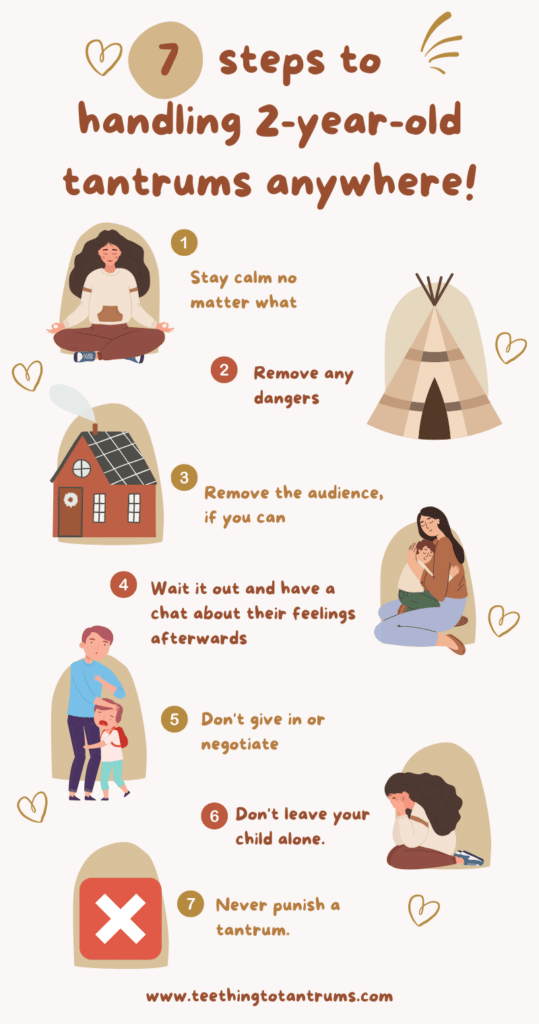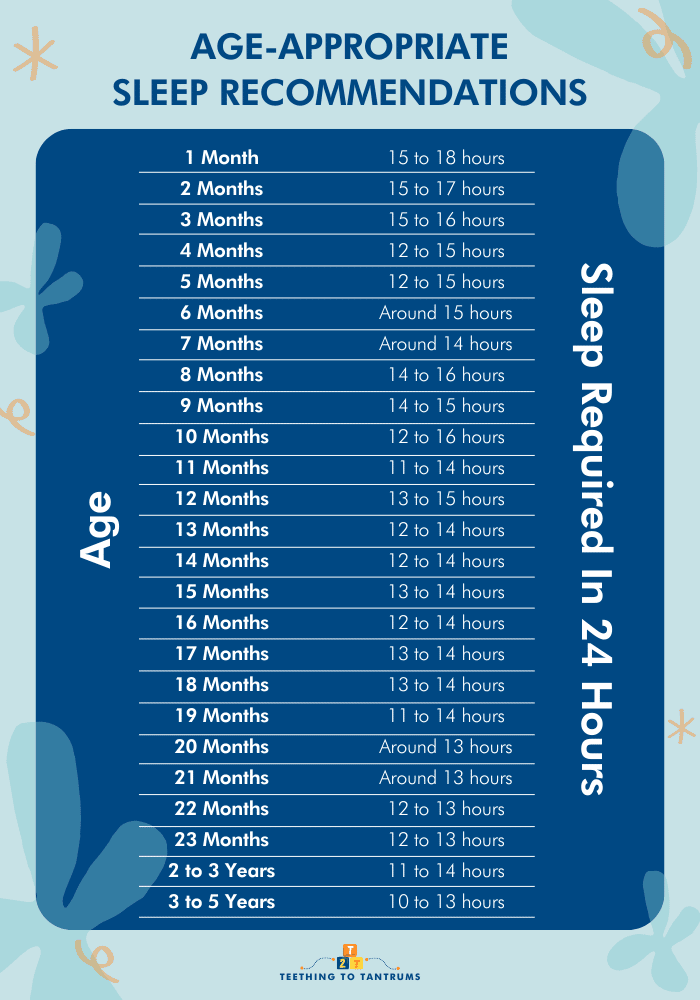While it is bad enough to handle tantrums from your toddler during the day… Toddler bedtime tantrums can be especially challenging. When tempers flare and everyone is tired… managing and preventing nighttime tantrums needs careful handling to manage emotions and prevent future meltdowns.
So in today’s article, I will share all of my top tips and tricks for managing toddler bedtime tantrums refined from over 40 years as a Norland Nanny.
Ready to stop bedtime tantrums once and for all? Let’s get into it.

Table of Contents
What Causes Toddler Bedtime Tantrums?
It is important to remember that tantrums are a normal part of your toddler’s development.
However, they do not need to be an inevitable part of your day.
Bedtime tantrums are triggered by many things and being aware of these causes can help you stop bedtime tantrums before they even begin.
It should also be mentioned that your toddler’s language development is way behind their ability to comprehend. Therefore, they can easily become frustrated if they cannot communicate their needs and feelings effectively.
Here are the most common triggers for toddler bedtime tantrums:
- Tiredness. Generally, tantrums come from your little one’s struggle to handle their emotions. Tiredness is a major factor, as exhausted toddlers really struggle to regulate their feelings. It is important to ensure your little one gets enough daytime rest so that they do not become overtired at the end of the day.
- Separation Anxiety. Being overtired can also lead to increased anxiety and frustration. This can easily create a cycle where fear of missing out or separation at night causes distress, especially at bedtime.
- Lack Of Consistent Bedtime Routine. Having a stable and recognizable routine at the end of the day will help to offer comfort and stabilize your toddler’s mood. However, when important routines (like bedtime) are interrupted, changed, or forgotten, it can cause your toddler to feel insecure, meaning they may respond with a temper tantrum.
- A Busy Day. An overly busy day or too much excitement in the lead-up to bedtime can also lead to bedtime tantrums. If a toddler has had an overstimulating day they will struggle to calm down without help.
- High-Sugar Snacks And Pre-Bed Screens. Snacks high in sugar or the use of screens especially in the lead-up to bedtime have been proven to exacerbate toddler bedtime tantrums.
- Hunger or Illness. Hungry toddlers might also be more prone to throwing a tantrum at bedtime as they struggle to understand why they are feeling grumpy (hangry). If you suspect your toddler is feeling unwell, consult a healthcare professional and ensure your little one gets plenty of sleep. Sick toddlers often need more sleep than normal and this will not only help them recover but prevent them from becoming overtired and more prone to a tantrum.
- Night-Time Fears. If your toddler has developed nightmares or a fear of the dark and monsters in the cupboard then they may throw a tantrum at bedtime because they are scared and do not know how to process their fears.
- The Arrival Of A New Sibling. The arrival of a younger sibling can trigger difficult bedtime behavior especially if your toddler feels that their new brother or sister is getting all of your attention when they have been sent to bed.
- Big Life Changes. In addition, you should be prepared for difficulties at bedtime if you have moved house or your toddler has started daycare. Any big life change can disrupt bedtime and trigger tantrum-like behavior.
- Inconsistent Transitions: Transitions are a fundamental part of your toddler’s life. If they are not managed correctly, you are more likely to encounter tantrums, meltdowns and emotional situations at key times during the day – especially at bedtime. To learn more about transitions and their impact on your toddler’s day, watch this video.
TOP TIP: I have recently seen more parents using sign language for young children to help limit frustration and improve communication. This can be an effective way of reducing tantrums-like behavior in some children. However, it is important to always accompany the signing by vocalizing the word to encourage speech development. To learn more about teaching children sign language, watch this video and check out this wonderful website: Baby Sign Language.

Are Bedtime Tantrums Normal?
Yes, bedtime tantrums are a normal and common part of your child’s development.
It’s reported that 75% of 2-year-olds and 60% of 3-year-olds experience tantrums, with a typical frequency of four to five times a week.
While tantrums reflect your little one’s normal growing sense of independence, frustration, and immature management skills, I believe that with careful planning, good observation, patience, and understanding… many tantrums can be avoided.
Looking to get your little one to sleep quickly and effortlessly? Check out my Bedtime and Nap Cheat Sheet and master the art of making daytime naps and bedtimes as seamless as possible.
A bedtime & nap cheat sheet so good your little one will ask you to put them to bed...
Laura Williams "This is a life saver! I'm so glad I downloaded your bedtime & nap cheat sheet. My little one actually asked me to put him to bed last night! Unbelievable! Thank you so much!"
Click Here For The FREE Cheat Sheet
How To Handle Toddler Bedtime Tantrums
You will handle your toddler’s bedtime tantrums in EXACTLY the same way as you would with a tantrum that occurs at any other point in the day.

- Stay calm. This is the hardest part of handling severe tantrums in toddlers. But taking a deep breath, staying calm, and not shouting will be the key to preventing a tantrum from escalating.
- Remove any dangers. If your toddler is thrashing about and you fear they may hurt themselves… either move them to a safer place or if that is not possible, remove any items they may hurt themselves with.
- Remove the audience, if possible. Usually at bedtime, there are few people around, but if the tantrum occurs before you’re in the bedroom… Ask everyone else in your house to please leave the room until you have dealt with the big emotions. Not having an audience to ‘perform’ to may take the wind out of your toddler’s sails.
- Don’t give in or negotiate. And I mean NEVER give in to a tantrum. Even if part way through you feel you may have denied them something that they could have had or done… Once you have said ‘no’ you must see it through. If you end up giving in to your toddler’s bedtime tantrum… you will reinforce to your child that this behavior gets results.
- Don’t leave them alone. While you may be tempted to walk away, do not leave your tantrum-throwing toddler alone. If they let you hold them until they have calmed down, great! But if this is not possible then be present at a distance without engaging and wait for the tantrum to pass.
- Never punish. Toddler bedtime tantrums should never be punished. Although you have to take a strong stance in dealing with a tantrum when they’re happening, you need to remember that your toddler cannot help feeling the way they do.
- Comfort after the event. You cannot force a tantrum to come to an end. Nor can you expect your toddler to listen to you mid-tantrum. Therefore, wait it out and once it’s over, cuddle your little one, look at a book together, and have a calming and non-accusatory chat about what happened.
NOTE: Learn more about handling tantrums at specific ages here:
Next Step: How To Prevent Bedtime Tantrums From Happening
Now you know how to handle a bedtime tantrum when they occur… Let’s focus on reducing their frequency in the first place and the good news is there are lots of things you can do to help prevent toddler bedtime tantrums from happening!
1. Establish A Consistent Bedtime Routine
Having a consistent bedtime routine will be the cornerstone of your tantrum-free bedtimes.
A recognizable bedtime routine that happens at the same time each day will help them understand what to expect at the end of the day.
When they are already tired at the end of the day, knowing what is coming up next will help them relax and become less prone to emotional outbursts.
- Begin the routine with a set transition time. It symbolizes the shift from daytime activities to bedtime. I always say the bedtime routine starts after the last meal of the day. Play should then be quiet, low-key, and screen-free to prevent your little one from becoming overstimulated and overtired.
- Always give timely warnings when getting ready for bed is about to happen and help your toddler succeed in transitioning by helping them tidy up.
- Move onto bath time, putting on pajamas, brushing teeth, then a bedtime story or two and a good night cuddle.
- Use this time for reading a story or discussing the day. This step provides comfort and personal connection, which can reduce tantrums.
Ensure the routine is age-appropriate and suits your child’s lifestyle. Younger children may need earlier bedtimes, while older children might need some quiet time to wind down.
Adapt the steps to suit your family, but keep the flow predictable. Predictability is reassuring for toddlers and can alleviate bedtime battles.
If you trying to establish a bedtime routine for the first time there may be setbacks. However, with a steady approach, you can help make bedtime a more peaceful part of the day.
Discover How To Create Stress-Free Bedtimes & Peaceful Daytime Naps, Consistently...
Without Tears, Tantrums or Showdowns
✅ Your parenting superpower to unlock calm evenings for years to come! 😌
✅ How to craft a calm and consistent bedtime routine that will get your little one falling in love with sleep… 🛌
✅ Uncover the techniques that the famous “Norland Nannies" use so you can get your little one going to bed and staying there! 🎉
✅ The secret to ending nighttime waking… to ensure your little one is getting enough sleep to thrive and reach their full potential! ❤️
✅ A super simple trick you can use to end hyperactivity before bed … so your little one will happily go to bed when you want them to 🌟
2. Offer Two Acceptable Choices
Tantrums very often stem from a desire for autonomy, so I always advise introducing the offering of two acceptable choices at points during the bedtime routine.
This could mean letting them choose which toys to play with in the bath, which pajamas to wear, or which 2 books to read before bedtime and gives them a sense of control while maintaining your overall bedtime plan.
TOP TIP: Always ensure you are happy with the two choices on offer!
3. Go Screen Free
No screens before bed is very important. The blue light emitted from screens has been proven to disrupt children’s sleep.
Screen use can overstimulate your little one when they need to be calming down.
In addition, arguments about when screens need to be turned off or taken away in the lead-up to bedtime can easily lead to an unnecessary tantrum.
4. Avoid Sugar And Caffeine
If the snacks and the final meal of the day are high in sugar and caffeine you run the risk of ending up with an overstimulated and hyper toddler at the end of the day who will resist sleep and inevitably be prone to a tantrum.
NOTE: I know it’s not always possible to produce a well-balanced home-cooked meal every night, but being aware of the sugar and caffeine content of your child’s meal will make a substantial difference to bedtime tantrums and your child’s sleep quality.
5. Monitor Day Time Sleep
With overtiredness being a big cause of bedtime tantrums ensuring your little one has enough age-appropriate daytime rest is hugely important.
An overtired child is highly likely to throw a tantrum.

6. Get Outside Every Day
Getting outside in the fresh air every day is always on my top list of must-do’s for good sleep.
As well as reducing tantrums, a toddler who has had the opportunity to have some physical exercise by running, jumping, and exploring is going to be more ready for bed at the end of the day.
7. Address Night Time Fears
If you suspect your little one is experiencing fear of the dark or having nightmares which makes them resistant at bedtime you will need to address the fear swiftly and calmly.
Using books can be an ideal way to do this as your little one will not have the language to explain their fears to you themselves. Reading about their fears can be an ideal way to help them understand what they are experiencing and to feel less alone.
Using a white noise machine or audio apps at bedtime can also help to alleviate tantrums that evolve from being fearful.
White noise machines are a game-changer for your little one's sleep and having one that plays all night is a must. With a long-lasting battery, this compact and stylish white noise machine contains 21 non-stop relaxing noises, which will lull your little one to sleep night after night, no matter where you are!
8. Address Separation Anxiety
Toddlers can often experience separation anxiety at night and their anticipation of your leaving them at bedtime can be a trigger for a tantrum and common stalling tactics.
Helping your little one to separate from you during the day for short periods can help them get used to you not being around all the time.
Learn more about toddler separation anxiety at night by reading this post: 9 Expert Tips To Stop Toddler Separation Anxiety At Night
9. Help Your Toddler Express Their Emotions
Improving your toddler’s verbal skills can certainly decrease bedtime resistance. Encourage them to express feelings and needs with words.
This development in communication can often ease the frustration that leads to tantrums.
Consider using flashcards like these to help your toddler learn the words for emotions.
Should You Ignore Toddler Bedtime Tantrums?
This is a good question.
I advise ignoring tantrum behavior by not reacting or interacting with your toddler during a full-blown tantrum. However, you must remain present.
This means sitting calmly in the room while your toddler is having a tantrum and acting uninterested in your toddler’s behavior until the storm has passed.
As long as your little one is not in danger of harming themselves then letting them ride out the storm uninterrupted is a good strategy for managing bedtime tantrums.
Your toddler will quickly learn that tantrum behavior does not get results.
However, it is important to approach this method with patience and understand that it’s not about neglecting your child’s needs but avoiding the reward of a reaction.
Consistency is key when managing these difficult moments. Applying the same rules every night helps your child learn expectations. If you decide ignoring is the best approach, stick to it every time to avoid confusion.
A word of caution, however.
Use logic to assess the situation. Is your child overly tired, hungry, or stressed?
Addressing these underlying needs can reduce the occurrence of tantrums.
This means establishing a calming bedtime routine and ensuring all physical needs are met before bed.
If a tantrum does occur take a big breath and ride it out. Your calm demeanor will model the behavior you wish to see in your child.

A Word About Sleep Training
If you are considering starting sleep training, be warned that some children may respond to sleep training by throwing a tantrum because you are changing the way things are normally done.
This is completely normal, but you must handle the tantrum as I outlined above and remain consistent with your evening routines, sleep training method, and resolve for tantrums.
Provide love and support but remain calm and resolute.
When To Seek Help For Your Child’s Resistance At Bedtime
If your toddler’s tantrums at bedtime have become frequent and intense despite you trying everything to alleviate them, it may be time to seek help.
Occasional resistance is normal, but when it’s constant, there could be underlying issues. These might include sleep disorders, heightened stress, or developmental challenges.
If you notice changes in your child’s sleep environment or behavior, such as sleepwalking or night terrors, or if your child shows signs of illness that disrupts their sleep, such as an ear infection, fever, or sniffling, consult a healthcare provider.
Sleep deprivation leading to overtiredness in toddlers can escalate into a cycle of behavioral issues and more resistance at bedtime.
If you think your child isn’t getting enough sleep, despite a good routine, reaching out for help is a proactive step. A healthcare professional can provide tips or a plan to get back on track.
When in doubt, remember that seeking help is a sign of care and attention to your child’s needs. Don’t hesitate to contact a pediatrician if you are concerned about your toddler’s bedtime behavior.
Frequently Asked Questions About Toddler Tantrums
Navigating toddler tantrums at bedtime can be challenging. This section addresses common concerns and offers practical advice.
Q: Can you sleep train a toddler who throws bedtime tantrums?
A: Yes, you can sleep train a toddler who throws bedtime tantrums. It’s important to establish a consistent routine for cues that signal nighttime. Techniques such as controlled comforting or ‘The Chair Method’ could be beneficial. Patience and consistency are key throughout the sleep training process.
Q: How long should I let my toddler scream at bedtime?
A: It’s not advisable to let your toddler scream for extended periods. If they’re screaming due to a tantrum, a few minutes to calm down may be needed. For consistent occurrences, working on bedtime routines could mitigate these tantrums.
Q: Why does my toddler get hysterical every night at bedtime?
A: Toddlers may become hysterical at bedtime due to various reasons. Overstimulation during the day, lack of routine, or separation anxiety could contribute to this behavior. Ensure a calm environment and a steady bedtime procedure to minimize these outbursts.
Q: What are effective strategies for managing a 2-year-old’s night-time tantrums?
A: To manage a 2-year-old’s nighttime tantrums, maintain a consistent bedtime routine, and keep the evening atmosphere soothing. You could use strategies such as offering a favorite toy or book and practicing relaxation techniques. It’s also beneficial to ensure their day includes balanced activity and rest.
Q: How can I calm my 3-year-old’s bedtime tantrums?
A: Calming a 3-year-old’s bedtime tantrums involves a combination of routine and comfort. Try incorporating calming activities like a warm bath or reading a story together. A consistent bedtime routine provides security, and gentle reassurance can help ease their stress.
Q: How should I handle my 4-year-old’s outbursts at bedtime?
A: When handling a 4-year-old’s outbursts at bedtime, remain calm and assertive. Acknowledge their feelings and provide clear expectations for bedtime. Introduce calming techniques, such as deep breathing exercises or visualizing a favorite place. Positive reinforcement for good behavior can also be motivating.
Q: What techniques can help soothe a 5-year-old’s screaming tantrums before sleep?
A: Soothing a 5-year-old’s tantrums may require several techniques. Encourage the use of words to express feelings rather than screaming. Maintain a calming pre-sleep ritual, and consider a quiet, engaging activity like puzzles or coloring. Remember to consistently apply the chosen strategies.
Need More Parenting Help?
- Download our FREE Bedtime & Nap Sleep Cheat Sheet. It’s a free, easy-to-use and proven formula designed for parents of 0-5 year olds to master the art of consistently undisturbed and restful sleep without the yelling, nagging or exhausting long-winded evenings.
- Check out our Parenting Toolbox. You’ll get access to expertly-chosen products that you can guarantee are the best for your little one and your wallet.
- Are you looking for personalized guidance to navigate the challenges of parenting? I offer 1-on-1 consultations to bring you tailored strategies and actionable advice to help support your child's growth and well-being with confidence.

A bedtime & nap cheat sheet so good your little one will ask you to put them to bed...
Laura Williams "This is a life saver! I'm so glad I downloaded your bedtime & nap cheat sheet. My little one actually asked me to put him to bed last night! Unbelievable! Thank you so much!"
Click Here For The FREE Cheat Sheet





